Abstract
Controversy still exists over the adaptive nature of variation of enzyme loci. In conifers, random amplified polymorphic DNAs (RAPDs) represent a class of marker loci that is unlikely to fall within or be strongly linked to coding DNA. We have compared the genetic diversity in natural populations of black spruce [Picea mariana (Mill.) B.S.P.] using genotypic data at allozyme loci and RAPD loci as well as phenotypic data from inferred RAPD fingerprints. The genotypic data for both allozymes and RAPDs were obtained from at least six haploid megagametophytes for each of 75 sexually mature individuals distributed in five populations. Heterozygosities and population fixation indices were in complete agreement between allozyme loci and RAPD loci. In black spruce, it is more likely that the similar levels of variation detected at both enzyme and RAPD loci are due to such evolutionary forces as migration and the mating system, rather than to balancing selection and overdominance. Furthermore, we show that biased estimates of expected heterozygosity and among-population differentiation are obtained when using allele frequencies derived from dominant RAPD phenotypes.
Full text
PDF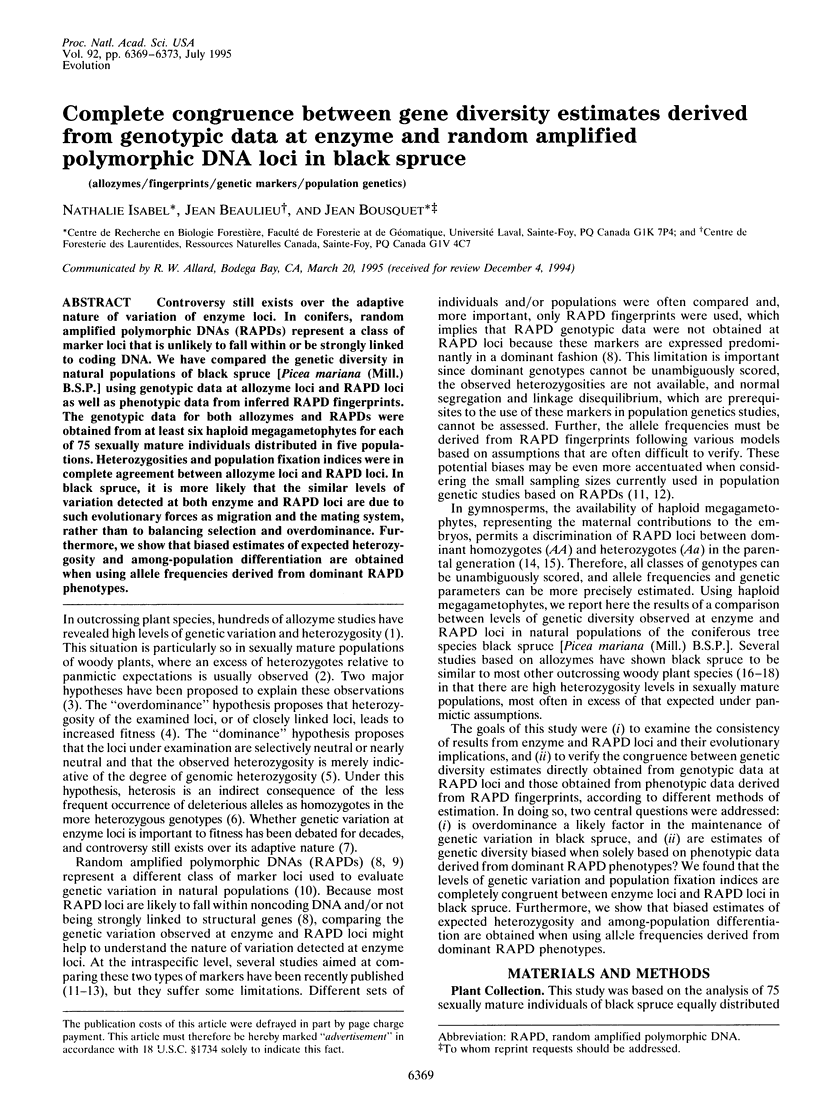
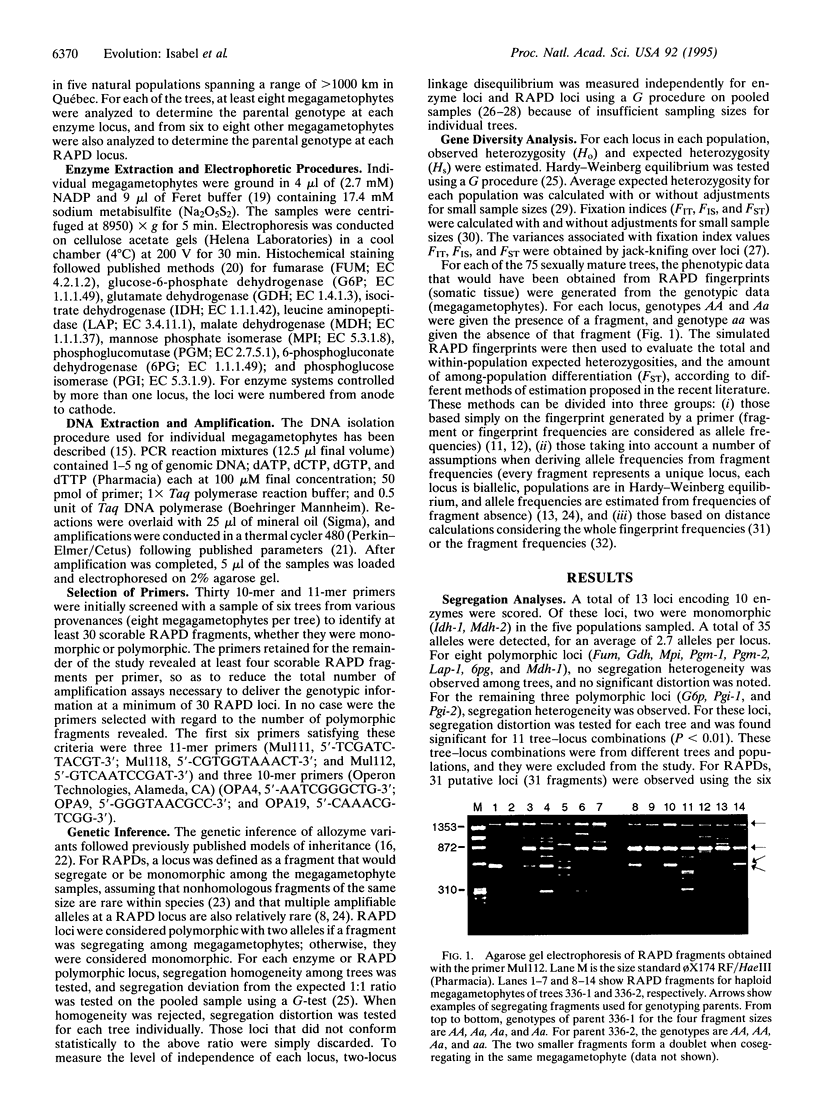
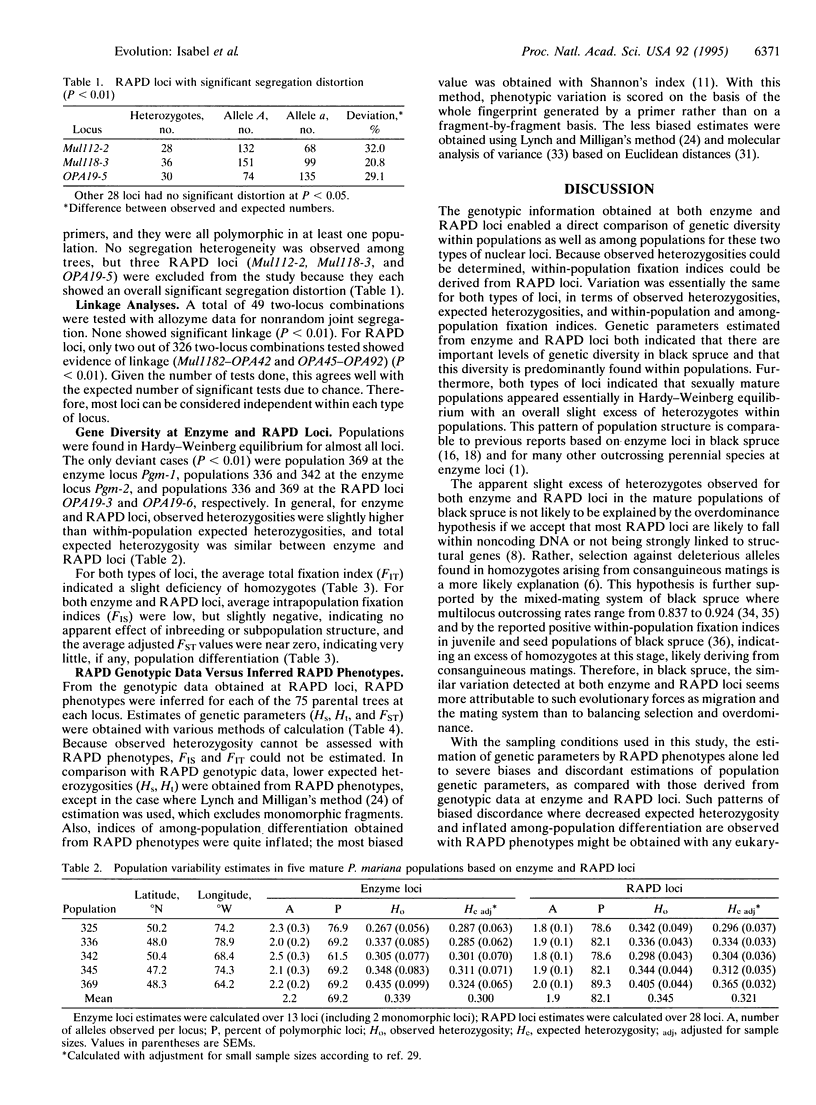
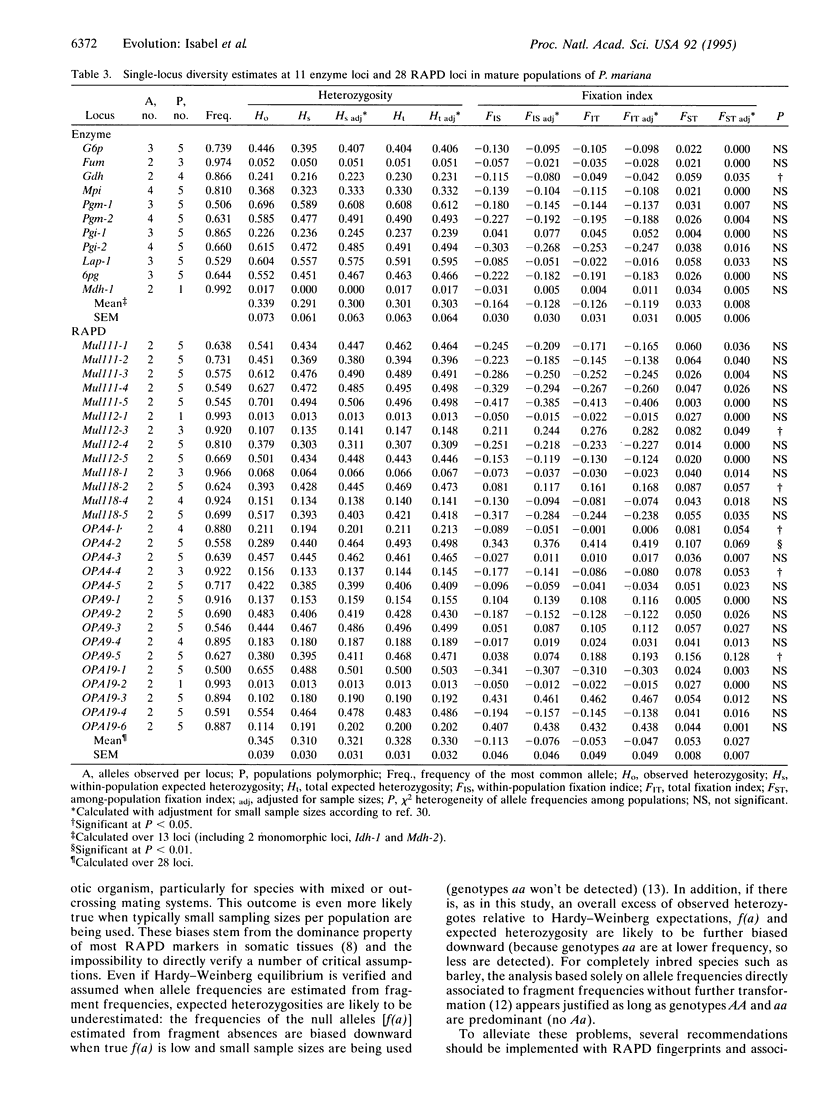
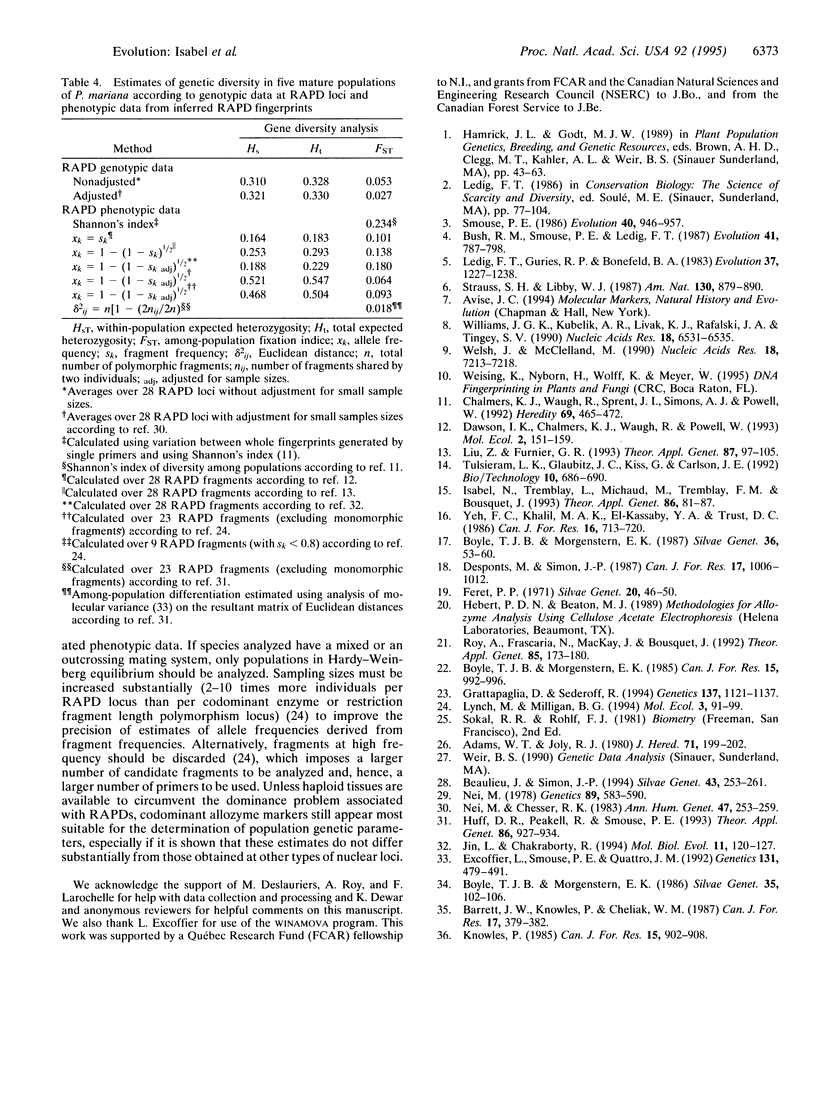
Images in this article
Selected References
These references are in PubMed. This may not be the complete list of references from this article.
- Chalmers K. J., Waugh R., Sprent J. I., Simons A. J., Powell W. Detection of genetic variation between and within populations of Gliricidia sepium and G. maculata using RAPD markers. Heredity (Edinb) 1992 Nov;69(Pt 5):465–472. doi: 10.1038/hdy.1992.151. [DOI] [PubMed] [Google Scholar]
- Dawson I. K., Chalmers K. J., Waugh R., Powell W. Detection and analysis of genetic variation in Hordeum spontaneum populations from Israel using RAPD markers. Mol Ecol. 1993 Jun;2(3):151–159. doi: 10.1111/j.1365-294x.1993.tb00104.x. [DOI] [PubMed] [Google Scholar]
- Excoffier L., Smouse P. E., Quattro J. M. Analysis of molecular variance inferred from metric distances among DNA haplotypes: application to human mitochondrial DNA restriction data. Genetics. 1992 Jun;131(2):479–491. doi: 10.1093/genetics/131.2.479. [DOI] [PMC free article] [PubMed] [Google Scholar]
- Grattapaglia D., Sederoff R. Genetic linkage maps of Eucalyptus grandis and Eucalyptus urophylla using a pseudo-testcross: mapping strategy and RAPD markers. Genetics. 1994 Aug;137(4):1121–1137. doi: 10.1093/genetics/137.4.1121. [DOI] [PMC free article] [PubMed] [Google Scholar]
- Jin L., Chakraborty R. Estimation of genetic distance and coefficient of gene diversity from single-probe multilocus DNA fingerprinting data. Mol Biol Evol. 1994 Jan;11(1):120–127. doi: 10.1093/oxfordjournals.molbev.a040086. [DOI] [PubMed] [Google Scholar]
- Lynch M., Milligan B. G. Analysis of population genetic structure with RAPD markers. Mol Ecol. 1994 Apr;3(2):91–99. doi: 10.1111/j.1365-294x.1994.tb00109.x. [DOI] [PubMed] [Google Scholar]
- Nei M., Chesser R. K. Estimation of fixation indices and gene diversities. Ann Hum Genet. 1983 Jul;47(Pt 3):253–259. doi: 10.1111/j.1469-1809.1983.tb00993.x. [DOI] [PubMed] [Google Scholar]
- Nei M. Estimation of average heterozygosity and genetic distance from a small number of individuals. Genetics. 1978 Jul;89(3):583–590. doi: 10.1093/genetics/89.3.583. [DOI] [PMC free article] [PubMed] [Google Scholar]
- Tulsieram L. K., Glaubitz J. C., Kiss G., Carlson J. E. Single tree genetic linkage mapping in conifers using haploid DNA from megagametophytes. Biotechnology (N Y) 1992 Jun;10(6):686–690. doi: 10.1038/nbt0692-686. [DOI] [PubMed] [Google Scholar]
- Welsh J., McClelland M. Fingerprinting genomes using PCR with arbitrary primers. Nucleic Acids Res. 1990 Dec 25;18(24):7213–7218. doi: 10.1093/nar/18.24.7213. [DOI] [PMC free article] [PubMed] [Google Scholar]
- Williams J. G., Kubelik A. R., Livak K. J., Rafalski J. A., Tingey S. V. DNA polymorphisms amplified by arbitrary primers are useful as genetic markers. Nucleic Acids Res. 1990 Nov 25;18(22):6531–6535. doi: 10.1093/nar/18.22.6531. [DOI] [PMC free article] [PubMed] [Google Scholar]



